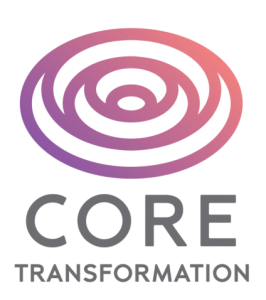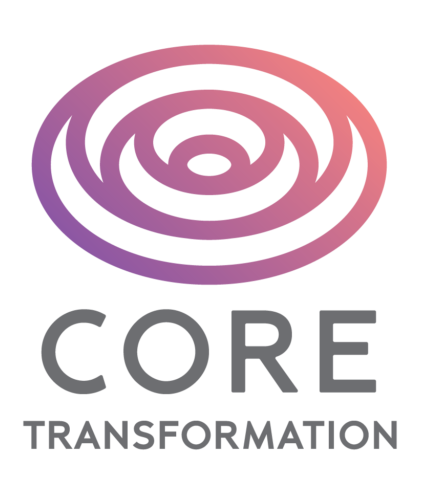Core Transformation Research
Core Transformation already has significant published research behind it, with more on the way. Here is a summary of the publications, the results, plus the studies already completed and not yet published.
Summary of Findings:
- Core Transformation is effective at changing problems, while also bringing about a positive sense of wellbeing.
- The amount of change compares favorably with other methods that have been studied.
- Change with Core Transformation can be measured from even just one or two sessions. (Of course, individual results vary.)
- Change from Core Transformation, in general, lasts over time (measured up to 8 weeks after Core Transformation treatment).
- Core Transformation can be taught. (Students in training get good results with Core Transformation.)
Two Published Research Studies show Core Transformation’s effectiveness:
- A Small Pilot Study
A pilot study (Braganza & Piedmont, Journal of Religion and Health, 2015) showed significant improvement in symptoms and other measures, from a 10-hour training in Core Transformation.
2. Gold Standard: First RCT published in 2019
An RCT on Core Transformation has been published in a major peer-reviewed journal (The Journal of Counseling and Development, July 2019), authored by Dinesh Braganza, et al.
That’s a randomized, controlled trial, which is considered to be the gold standard in research.
129 people were guided through a single session of the Core Transformation process. None of the participants had any prior knowledge of Core Transformation, and most were unfamiliar with any form of counseling. Using five different psychological tests, the researchers found significant improvements in scores in every category they measured. These improvements were found both 4 weeks and 8 weeks after the single Core Transformation session. This shows the results were long-lasting.
What stands out from this study?
Participants in this study were what researchers call a “community sample,” which means they weren’t clinical patients. However, researchers used a standard psychological test to measure “Symptom Experience.” In other words, they measured how bad the problems were. (The research instrument used was the “GHQ-12 Questionnaire”.) Using this measure, researchers could zero in on the subgroup of people in the study who, according to the GHQ-12, could have qualified for a clinical diagnosis. 44 of the 129 participants were in this subgroup.
4 weeks after the CT session, 61% of this subgroup were no longer in that category.
This means 61% of those who had appeared to qualify for a clinical diagnosis improved so much that they no longer fit the criteria for a clinical diagnosis, after the CT session.
How do our results compare with other methods?
Researchers use a number called a “Cohen’s d” to measure “effect size.” In other words, how big was the change? And they can use this number to compare results across studies. This number makes it possible to compare the amount of change from different studies that used different interventions.
The other interventions the research team looked at were:
- Cognitive Behavioral Therapy,
- Humanistic-Experiential,
- Psychodynamic and
- Mindfulness approaches.
These are all good approaches. They all get results, according to research. And the amount of change from one session of Core Transformation was in the same range as the amount of change these other interventions got after 13-23 sessions.
Not only that, the research team has just discovered a new finding from the data. This finding isn’t yet published.
If we zero in on the subgroup with more serious problems (mentioned above), this sub-group got significantly better results than the group as a whole. For this subgroup, the results after 1 session of Core Transformation was similar to the very best result from the other studies using 13-23 sessions. The effect sizes of the other studies ranged from d=.26 to d=1.21. (A higher number is better.)
Our effect size with Core Transformation (for the subgroup with more serious issues) was d=1.29.
So, the research showed strongest results for Core Transformation with the subgroup with more serious issues. Why is this? It may be because this subgroup had more room for improvement. If someone starts out with very little anxiety, for example, they have less room for improvement compared to someone starting with more anxiety. Most other methods were tested on a clinical sample, with subjects who likely had more room for improvement.
If this is the case, this suggests that when CT is tested with a larger clinical sample, the results may be even stronger.
Two New Unpublished Studies
From 2020-2023, Andreas NLP has collected additional data that is in the process of being published.
30-Day Practice Study
In the first unpublished study, participants received a Core Transformation video training, and then participated in a 30-day practice group. In the practice group, they guided others and they were guided through the process once a week. They were also encouraged to use a quick version of CT as a self-practice every day for about 15 minutes.
As expected, participants noticed improvements in every aspect they measured: symptom experience decreased, and wellbeing improved.
Researchers asked the participants to what degree their problem issue (a behavior, thought, or feeling) had been resolved, in the original situations where it had been a problem. During the last week of the 30 day practice, 91% of the respondents reported that their issue was between 60% and 100% resolved, and over half of respondents (55%) said it was resolved more than 80%.
About 8 weeks later, 72% said their issue was between 60% and 100% resolved, and still over half (nearly 53%) said the problem resolution was greater than 80%. They also reported positive developments in their lives that went way beyond just resolving problems.
CT Coach Training Study: A Second RCT
In the second unpublished study, volunteers from the community were given two Core Transformation sessions spaced about a week apart. They were asked to work with a mild to medium issue. The treatment was provided by CT coaches-in-training, who had already received quite intensive and thorough training in CT. Again, improvements were noted with every measure they used.
This study was a quasi-randomized wait-listed design, with one group receiving treatment right away, and another group receiving delayed treatment. Both groups noticed similar improvements.
Core Transformation Effectiveness Can Be Replicated
Both of these new studies show significant improvements in symptom measures, while also showing significant increases in well-being and spirituality.
This is really important, because it shows that the results of Core Transformation can be replicated.
The field of psychological research has what’s called a “crisis of replication”: Often, a new method has a very impressive pilot study, and everyone gets excited about it. Then, when there’s an attempt to replicate the study, perhaps having more people deliver the treatment to a larger group, it falls flat.
One theory about why this happens is that in the first study, the “pilot,” the intervention was done by someone especially skilled in the method. Perhaps a charismatic “developer” or proponent of the method. However, if it’s the method itself that works, it should be possible to train other practitioners to get the same results.
It appears that often that doesn’t work. The disappointing results from replication attempts could be because they weren’t able to transfer the original service provider’s effectiveness reliably to others. (Another possibility is that they just got lucky with the results from the pilot study, due to a small number of participants.)
With Core Transformation, we have research data showing that we can transfer effectiveness to students of the method, and every study gets similar results.
This shows that it’s the method itself that works reliably. And that the Core Transformation Coach Certification Training can reliably train new therapists and coaches to get the same positive results.
More is happening!
Check back here for updates – more details about the results of these new studies, and others that are in the pipeline, may be added to this page!

